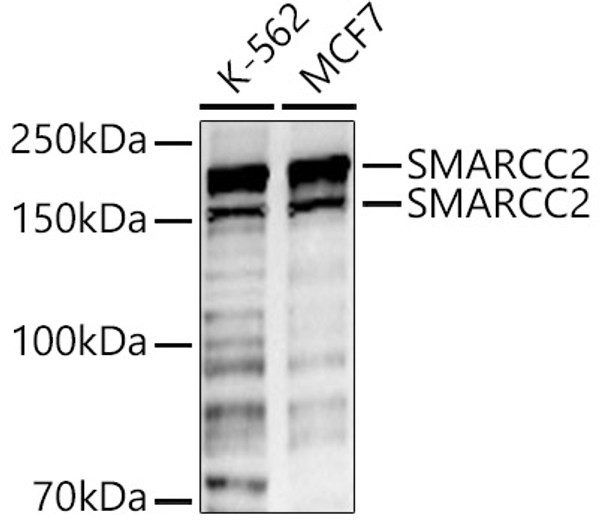| Tissue Specificity | Expressed in monocytes, basophils, B-cells, umbilical vein endothelial cells (HUVEC) and B-lymphoblastoid cells. Lower expression detected in CD4+ T-lymphocytes and natural killer cells. In the brain, detected in endothelial cells and capillaries, and in mature neurons of the frontal cortex and hippocampus. Expressed in tubular formation in the kidney. Highly expressed in astroglial tumor endothelial, microglial and glioma cells. Expressed at low levels in normal CD34+ progenitor cells, but at very high levels in several myeloid malignant cell lines. Expressed in breast carcinomas but not in normal breast tissue (at protein level). |
| Post Translational Modifications | The Ser/Thr residues in the C-terminal cytoplasmic tail may be phosphorylated. Ubiquitinated at the Lys residues in its C-terminal cytoplasmic tail and is essential for correct trafficking from and to the cell membrane. Deubiquitinated by CXCL12-stimulation in a reversible manner. |
| Function | Atypical chemokine receptor that controls chemokine levels and localization via high-affinity chemokine binding that is uncoupled from classic ligand-driven signal transduction cascades, resulting instead in chemokine sequestration, degradation, or transcytosis. Also known as interceptor (internalizing receptor) or chemokine-scavenging receptor or chemokine decoy receptor. Acts as a receptor for chemokines CXCL11 and CXCL12/SDF1. Chemokine binding does not activate G-protein-mediated signal transduction but instead induces beta-arrestin recruitment, leading to ligand internalization and activation of MAPK signaling pathway. Required for regulation of CXCR4 protein levels in migrating interneurons, thereby adapting their chemokine responsiveness. In glioma cells, transduces signals via MEK/ERK pathway, mediating resistance to apoptosis. Promotes cell growth and survival. Not involved in cell migration, adhesion or proliferation of normal hematopoietic progenitors but activated by CXCL11 in malignant hemapoietic cells, leading to phosphorylation of ERK1/2 (MAPK3/MAPK1) and enhanced cell adhesion and migration. Plays a regulatory role in CXCR4-mediated activation of cell surface integrins by CXCL12. Required for heart valve development. Regulates axon guidance in the oculomotor system through the regulation of CXCL12 levels. (Microbial infection) Acts as a coreceptor with CXCR4 for a restricted number of HIV isolates. |
| Protein Name | Atypical Chemokine Receptor 3C-X-C Chemokine Receptor Type 7Cxc-R7Cxcr-7Chemokine Orphan Receptor 1G-Protein Coupled Receptor 159G-Protein Coupled Receptor Rdc1 HomologRdc-1 |
| Database Links | Reactome: R-HSA-380108Reactome: R-HSA-418594 |
| Cellular Localisation | Cell MembraneMulti-Pass Membrane ProteinEarly EndosomeRecycling EndosomePredominantly Localizes To Endocytic VesiclesAnd Upon Stimulation By The Ligand Is Internalized Via Clathrin-Coated Pits In A Beta-Arrestin-Dependent MannerOnce InternalizedThe Ligand Dissociates From The ReceptorAnd Is Targeted To Degradation While The Receptor Is Recycled Back To The Cell Membrane |
| Alternative Antibody Names | Anti-Atypical Chemokine Receptor 3 antibodyAnti-C-X-C Chemokine Receptor Type 7 antibodyAnti-Cxc-R7 antibodyAnti-Cxcr-7 antibodyAnti-Chemokine Orphan Receptor 1 antibodyAnti-G-Protein Coupled Receptor 159 antibodyAnti-G-Protein Coupled Receptor Rdc1 Homolog antibodyAnti-Rdc-1 antibodyAnti-ACKR3 antibodyAnti-CMKOR1 antibodyAnti-CXCR7 antibodyAnti-GPR159 antibodyAnti-RDC1 antibody |
Information sourced from Uniprot.org











